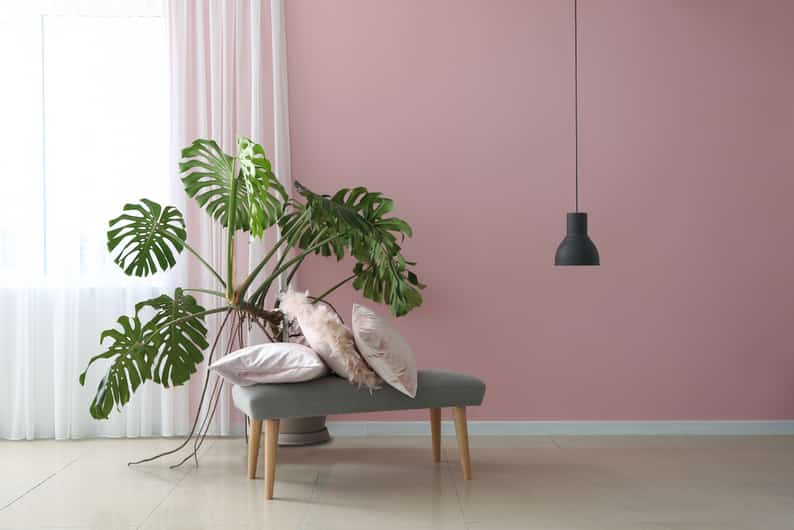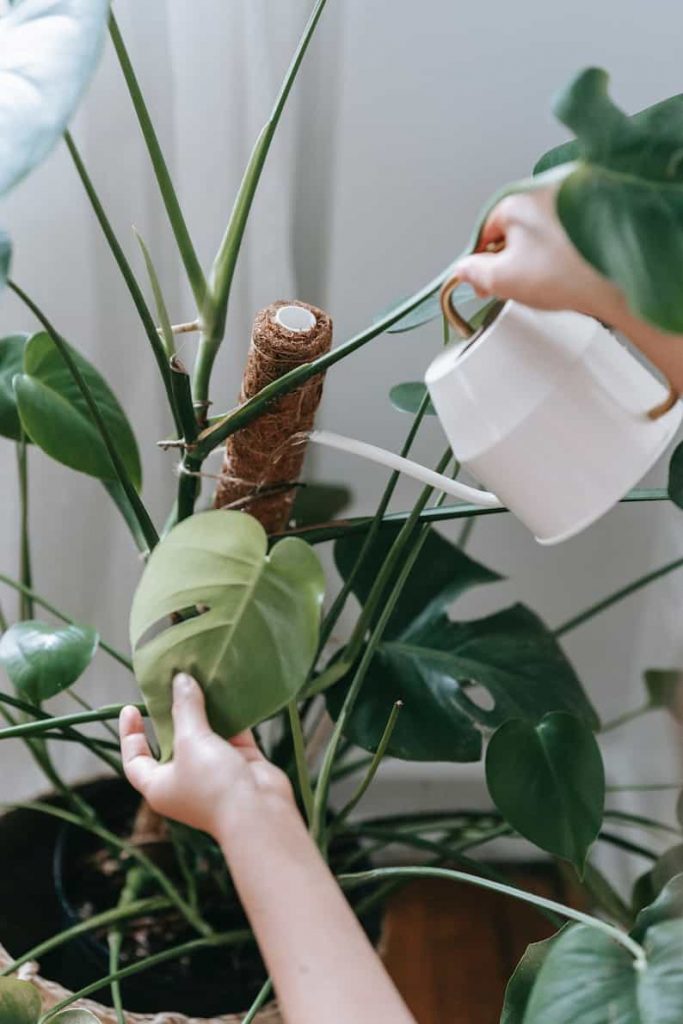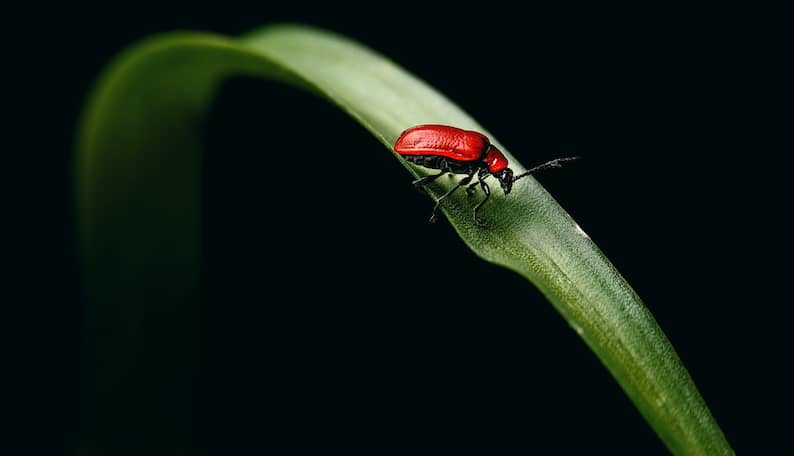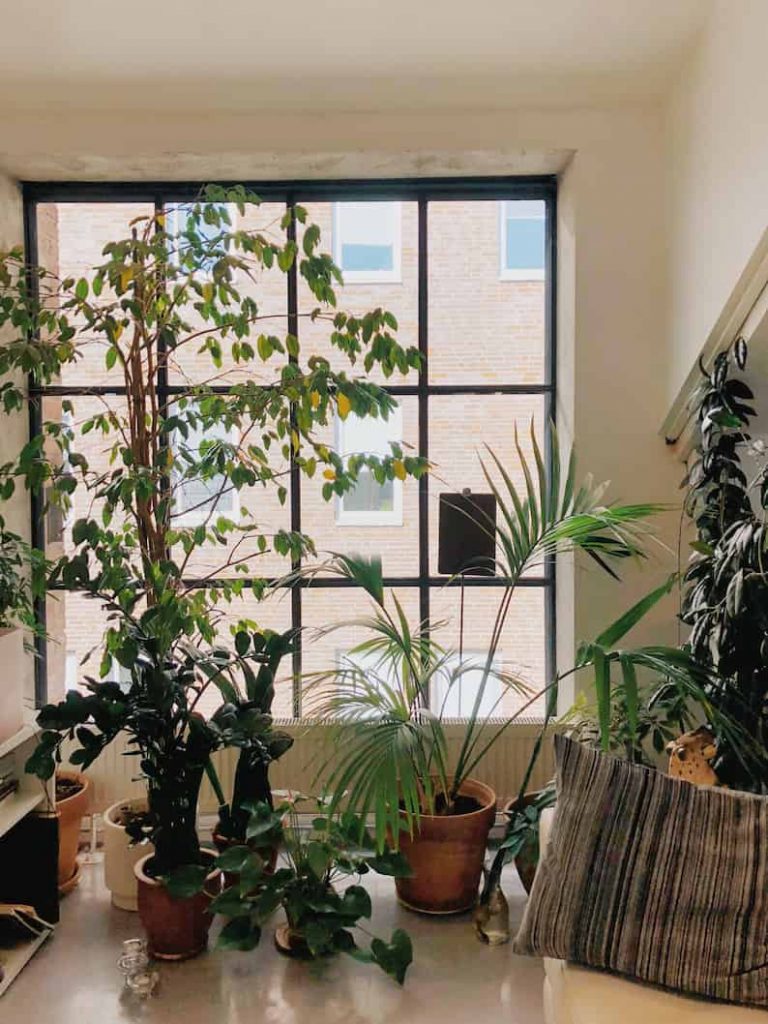It’s always annoying when you go to bed one night with a thriving green houseplant and wake up to your Monstera leaves turning brown. After all, you’ve been doing everything correct and giving it all the TLC it needs, right?
Well, maybe not. In fact, while not always the case, sometimes too much TLC can actually cause problems for your Monstera which often just likes to be left alone instead.
Fortunately, you’ll see that it’s usually very easy to fix brown Monstera leaves. Depending on the exact cause in your case, a few tweaks to your plant maintenance routine should usually do the trick.
However, it’s also important to rule out more serious potential culprits, like disease or pests, not to mention ensuring that the problem, whatever it is, doesn’t come back. This is why you should keep reading to find out the possible causes of Monstera developing brown spots, what to do about these and even whether you should cut brown leaves off your Monstera.

Table of Contents
Why are my Monstera leaves turning brown?
Your Monstera leaves are turning brown likely because you are either overwatering your plant or exposing it to excess direct sunlight. That said, other reasons could be due to underwatering, disease, and low humidity.
Let’s take a look at each of these in turn to give you an indication of what may be the specific issue with your own Monstera plant.
1. Overwatering
Overwatering is one of the most common reasons for Monstera leaves to turn brown. This mostly happens when the soil does not absorb water properly, leading to your Monstera plant roots staying in water for a longer time. The excess water and moisture can cause the roots to rot, leading to the plant having dark brown spots and, sometimes, even leading to your Monstera developing black spots.
If the soil is still wet, it is essential to skip watering for a day or two because severe rot of the roots can kill the plant. In addition, excess water hinders efficient absorption of moisture and nutrients and makes the plant weak. As a result of the dehydration, the leaves turn brown.
Overwatering a Monstera does not happen after one watering but from someone giving their plant excess water over some time. Some plants need the soil to dry between waterings than others. However, for most tropical plants, including Monstera, you only need to ensure the top of the soil is dry between the waterings.
2. Underwatering
Monstera plants will not grow well in dry soil. Lack of sufficient water adversely affects the absorption of nutrients. If you find your Monstera growing light brown patches or dry, crispy edges on the leaves, it is possible that you are underwatering it.
While it is good to let the soil mostly dry before watering to avoid water flooding, you should not wait until it’s completely parched. Otherwise, if your Monstera’s soil is too dry, the roots can die, leading to the leaves turning brown and crispy.
The best way to test this is to check if the soil is crumbly or overly compacted. In either case, it’s likely time to give your houseplant a good drink and reassess how often you water your Monstera.
Best soil for Monsteras
Specially designed soil for your Monstera. Light and well-draining, making it perfect for avoiding root rot, while being packed with just the right nutrients to keep your plant happy.
3. Excess sunlight
Excessive sunlight is one of the other most common causes of Monstera leaves turning brown. Monstera plants naturally thrive under bright and indirect sunlight. Therefore, exposure to direct light might result in your Monstera being sunburnt.
As a plant owner, you should always watch out for your Monstera’s light requirements as burnt leaves likely won’t recover. You can save the leaves from turning brown or burning by placing the plant about three feet away from your southern-facing window to ensure it gets an optimal amount of light without being exposed to direct sunlight.

Alternatively, pick a window that has a different orientation where the light may be softer and thus more appropriate for a Monstera. You can also use window blinds to diffuse the sunlight.
Keep in mind as well that excessive sunlight is typical during summer when the sun shines strong for most of the day, compared to the winter season when the pants can stand some hours of direct sunshine. As such, you may need to consider shifting your plant depending on the season.
4. Low humidity levels
Monstera is native to humid places and thrives under extreme humidity. If the leaf margins of your plant have begun to brown and your Monstera is drooping, your plant may be unhappy with the humidity levels in your home where the moisture in your indoor air could be quite low.
This is because, in these cases, your plant will lose a lot of its moisture due to transpiration. That, in turn, can cause your Monstera leaves to turn brown
There are several steps you can take to increase humidity levels for your Monstera in your home, such as adding a pebble tray, grouping houseplants together or using a humidifier.
5. Disease
Certain fungal infections are relatively common among Monstera plants. This particularly includes eyespot disease (spilocaea oleagina), which is also sometimes referred to as peacock eye as the spots on the leaf look similar to eyes. You will realize that your Monstera could be affected by this if you see some yellow halos or rings around the brown spots of the leaves.
Anthracnose, a collection of linked fungal diseases, could also lead to your Monstera leaves turning brown. In this case, you’ll likely first notice your Monstera leaves turning yellow and brown before,, eventually, falling off as the plant dies.
One of the main causes for these is wet foliage. As a result, you should never leave the plant wet for a long time. However, if you do notice these brown spots forming, take a keen note of the leaves to tell whether they are affected by the disease and take appropriate action immediately.
6. Poor water quality
The quality of water you use to water your plant matters is essential for new growth on your Monstera. As a result, if your plants are having issues and it doesn’t appear to be due to any of the other potential causes on this list, you may want to consider testing the water to see if that’s the culprit.
In particular, it’s been found that water containing fluoride can lead to fluoride toxicity in houseplants, which can often be seen by the tips of leaves going brown.
There are plenty of reasonably priced fluoride test kits online if you would like to test the water coming out of your taps but you may also want to consider using rain or distilled water while watering your plants.
Why are my variegated Monstera leaves turning brown?
Your variegated Monstera leaves are turning brown likely due to either a lack of light or a buildup of salt in the water. Since the white section of this plant’s leaves lacks chlorophyll, those parts can’t photosynthesize. As such, the variegated Monstera needs more light than a non-variegated one.
Furthermore, since this type of Monstera is vulnerable to salt accumulation, you should consider leaving tap water out and uncovered for 24 hours before using it to water your variegated Monstera plant. This will allow at least some of the minerals and compounds to evaporate which can, in turn, help to prevent the leaves from turning brown.
How do you fix brown Monstera leaves?
Once you have determined the likely cause of why your Monstera leaves are turning brown, there are certain steps you can take to prevent this going forward. Some of these tips include the following:
1. Do not overwater
The majority of the people have a daily fixed watering schedule they strictly follow without paying attention to the condition of the plant and the soil. However, checking the state of the soil is crucial in ensuring that you don’t overwater your plant.
In particular, make sure you allow the top inch or two of soil to dry before you water your Monstera again.
If, however, you realize that the soil seems to be staying too wet for too long, you may want to check if your houseplant’s pot is the right size. A container that’s too small for the plant will not only be a likely cause of water-related problems, but there are other issues that can arise, like your Monstera becoming root bound.
2. Provide enough water
It’s also important to create a watering routine that looks at the soil with the goal of avoiding under watering, not just over watering. That is, check the soil to make sure it’s not becoming too dry and adjust accordingly.
If you think this is an issue with your plant, give your plant a good soaking. From there, wait until the top two to three inches of the soil is dry before watering it again.
3. Providing sufficient fertilizers
Just like any other plant, Monstera plants also need sufficient nutrients to thrive. The plants do not depend on sunlight alone; they also need the correct balance of minerals to flourish. Fertilizers provide the required vitamins for your plant to stay healthy.
If you feed your plant with enough nutrients, they grow large with beautiful green leaves, making them perfect for your home or office decor. Conversely, lack of sufficient nutrients causes stunted growth and leaf discoloration, including that this can be a prime cause of your Monstera leaves turning brown.

To enhance healthy growth, a good Monstera fertilizer should contain balanced phosphorus, potassium, and nitrogen, either in liquid or solid form. Most of these fertilizers are added during watering so that they can be incorporated effectively in the soil.
Best fertilizer for Monsteras
Jack’s Classic 20-20-20 All Purpose Fertilizer
A great fertilizer with the perfect balance for your Monstera. Simply dissolve in water and feed your plant to watch it thrive.
Another important thing to note when planning to fertilize your plant is exactly when you do this. That is, the best time to fertilize your Monstera is when they are at the active growth stage. In addition, consider how frequently you plan to fertilize your houseplant, as this is going to largely depend on the type of fertilizer you are going to use.
4. Conduct routine pest and disease checks
Pests and diseases on your Monstera can cause severe damage to your plant. Notably, household pests like spiders, mealybugs, scale, fungus gnats, aphids or thrips on your Monstera can cause problems. These organisms suck moisture from the leaves leading to the Monstera leaves turning brown due to being dehydrated.
To avoid this, check the leaves thoroughly while watering or cleaning your plant to notice any infection on its leaves or stems, so that you can ideally take appropriate treatment action as soon as possible. You should also keep an eye out for the presence of webbing, cottony materials, and clear sticky goo indicate the presence of pests.

To avoid pest infections on your houseplants, keenly inspect plants before buying them and quarantine new plants before mixing them with the others in your collection to prevent the spread of diseases.
Where pests are becoming a consistent issue, consider using an appropriate pesticide to get rid of them once and for all. It can also help if you clean your pots to try to keep the fungus away. You could do this by repotting your Monstera in a fresh pot, allowing you to deal with the older one accordingly.
5. Check the light situation
As mentioned earlier, Monstera need bright, indirect light to thrive. If they get too much light, this can burn the plant which can then lead to brown leaves and, in extreme cases, the plant dying.
This is why, if your plant is currently next to a window, you should check both the intensity and the duration of light that your plant is receiving. For example, a southern-facing window will be too much for a Monstera, so consider moving it to another position in your house.
Alternatively, you could move it away from the window by a few feet or add a sheer curtain to filter the light and make it more favorable to your houseplant.

6. Introduce some moisture
There are several ways to manage the humidity levels around your plant. Firstly, you can mist the leaves of the plant frequently with clean water, although this is only a temporary solution so may not be the best long term option.
A better one that you can apply to keep the humidity levels slightly higher, as per your Monstera’s preferences, involves setting up a pebble tray at the bottom of the pot. You should also protect your Monstera against air drafts from air conditioners and radiators by keeping your plant well away from any of these.
Using a humidifier can also be a good way of increasing indoor humidity for your plant. It’s also good to keep in mind that different rooms in your house will have different levels of moisture. For most people, basements and bathrooms have the best humidity levels suitable for the growth of Monstera plants.
For many people, it is challenging to determine the best room for your Monstera based on its humidity level. For this reason, you can purchase a hygrometer to help you measure the humidity and choose the best place for your plant.
7. Combat leaf infections
Bacterial and fungal infections are difficult to manage, although they can be avoided. If all other causes of the brown spots have been ruled out, your Monstera may have a fungal or bacterial infection. For example, bacterial leaf spot on Monstera is an annoying, yet pretty common problem with this houseplant.
The most effective way to manage this is by removing the affected leaves. If you identify the infections early enough, you can beat them before they spread. To do this, incorporate the following into your plant care routine:
- Change the soil of your plant frequently to prevent the spread of diseases,
- Remove the affected leaves to avoid the spread of the disease,
- Keep your plant under a shade or indoors when it is too hot, and use fungicides to prevent infections
Should I cut brown leaves off Monstera?
You should cut brown leaves off your Monstera. This is because affected parts of the leaf can no longer photosynthesize and so cannot produce energy for your plant. They also have no resistance against decay and infection as compared to healthy leaves. Removing brown leaves can also help to protect the rest of your plant.
That is, bacteria and fungus consume nutrients found in decaying plant cells and also proliferate on the surface. To help protect the remainder of the plant from these diseases, you should remove any brown or damaged leaf tissue.
And that’s not even to mention that your Monstera will simply look better when its brown leaves are removed!
How to cut brown leaves off Monstera
To cut Monstera leaves that are diseased or dying from other reasons, use sharp blades to cut them off at their stem, being careful to not damage the plant’s main stem where new leaves will form. For less damaged leaves, carefully cut off the small brown part to preserve the healthy part of the leaf.
If you believe a fungal or bacterial infection caused the damage to your Monstera leaves, clean your cutting instrument before and after use. I often clean the blades with rubbing alcohol.

Damage from other causes, such as overwatering is not infectious and cannot be passed to healthy leaves by touch. In this instance, you may proactively disinfect the cutting instrument to avoid any germs that may be feeding on the dead tissue from entering the cuts. That said, it’s hard for a plant to get infected after a routine pruning of your Monstera.
Leaving the remaining green bits of the leaf in place, except when affected by infection, can benefit your Monstera since they can still supply food through the process of photosynthesis.
You should also be careful not to remove too many leaves at once, even if the damage is quite extensive. This is because a plant may not be able to recover if you cut off too many leaves given that it won’t be able to photosynthesize. Instead, cut off those leaves that are dead or extremely damaged first. If needed, more can be removed down the track if their situation gets worse.
Related: When Do Monstera Leaves Split?
Final thoughts on brown Monstera leaves
Monstera leaves turning brown is often one of the first indicators of a problem with this plant. Fortunately, however, most of the issues that cause this can be solved with some simple adjustments to your plant care routine.
Where it gets more difficult is with pests or disease. It’s for this reason that it’s good to keep a close eye on your Monstera to ensure that if one of these concerns rears its ugly head, you can address it as quickly as possible before the situation gets out of control – or, worse, spreads to other plants in your home.
That said, by far the most common reasons for this are overwatering and too much light. These are also basically the easiest houseplant problems to fix so you should find in almost no time that you’re back to having a happy, thriving Monstera.



